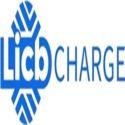Notifications

8 minutes, 22 seconds
-146 Views 0 Comments 0 Likes 0 Reviews

As electric vehicles (EVs) become more popular, they are evolving into more than just eco-friendly transportation options. Thanks to advancements in bidirectional EV charging, these vehicles are now emerging as mobile energy storage systems capable of interacting with the power grid in innovative ways. Known as bidirectional charging or vehicle-to-grid (V2G) technology, this capability offers new opportunities for energy flexibility, cost savings, and enhanced grid resilience.
As a professional EV charger manufacturer in China, Topper Company delivers dependable electric vehicle charging station equipment and comprehensive charging solutions.
Bidirectional EV charging allows electric vehicles to not only draw power from the grid but also send stored energy back into it. This two-way energy flow enables EVs to play an active role in the energy ecosystem, supporting the grid during times of peak demand or outages. Essentially, EVs become mobile batteries that can balance the grid, supply energy to homes, or even charge other electric vehicles.
Bidirectional charging represents a breakthrough in EV technology, offering a range of capabilities far beyond simple vehicle charging. Here’s an overview of the different types:
Vehicle-to-Grid (V2G) Vehicle-to-Grid (V2G) is the most well-known form of bidirectional charging. It allows EVs to return energy to the grid, acting as distributed energy resources that can support grid operators. During periods of high demand, such as extreme weather events, V2G can stabilize the grid by supplying extra power. EV owners can also earn revenue by selling excess energy back to the grid. V2G technology enhances the integration of renewable energy sources, as EVs can store surplus solar or wind energy and release it when needed.
Vehicle-to-Home (V2H) Vehicle-to-Home (V2H) technology enables EVs to serve as backup power sources for homes, especially useful during power outages. For instance, an EV can power essential appliances like lights, refrigerators, or medical equipment during blackouts. V2H also allows for cost savings by charging the vehicle during off-peak hours when electricity rates are lower and using the stored energy to power the home during peak hours when rates are higher.
Vehicle-to-Load (V2L) Vehicle-to-Load (V2L) allows EVs to power external devices or equipment. This is especially beneficial in remote locations where grid access is limited, such as construction sites or outdoor activities. In emergencies, V2L can provide power for critical devices like communication tools or medical equipment. Its flexibility makes it a valuable option for a wide range of uses.
Vehicle-to-Vehicle (V2V) Vehicle-to-Vehicle (V2V) charging allows one EV to transfer energy to another. This feature can be particularly useful in emergencies where an EV has run out of charge but needs a quick boost to reach the nearest charging station. V2V also has potential applications for fleet management, allowing companies to optimize energy usage across their EV fleets.
Bidirectional EV charging offers significant advantages across economic, environmental, and operational fronts. Here are some key benefits:
Energy Flexibility
Bidirectional EVs can store excess renewable energy generated during periods of peak production (e.g., midday when solar power is abundant) and release it when renewable sources are unavailable. This helps balance demand, reduce reliance on fossil fuels, and maximize renewable energy use.
Cost Savings
EV owners can participate in demand response programs, selling electricity back to the grid during peak hours when electricity prices are higher. This not only helps reduce energy costs but also turns EVs into revenue-generating assets.
Grid Resilience
A network of bidirectional EVs can serve as a decentralized power source during grid emergencies. EVs can maintain essential services and power critical infrastructure, such as hospitals or emergency shelters, during widespread power outages.
Environmental Impact
By optimizing energy storage and usage, bidirectional charging helps integrate renewable energy into the grid and reduces greenhouse gas emissions. It supports the creation of a more sustainable energy system and can contribute to global carbon reduction goals.
Several electric vehicle models already support bidirectional charging, with more manufacturers incorporating this technology. Here are some examples:
Nissan Leaf ZE1: One of the first vehicles with V2G capabilities, making it a popular choice for energy-conscious consumers.
Mitsubishi Outlander PHEV: This plug-in hybrid offers Vehicle-to-Home (V2H) capabilities, allowing owners to power their homes during outages.
Hyundai Ioniq 5 and Kia EV6: Both vehicles feature Vehicle-to-Load (V2L) technology, enabling owners to power external devices on the go.
Ford F-150 Lightning: A popular electric truck offering robust V2H functionality for homeowners looking for backup power.
BYD Atto 3 and Han EV: Equipped with both V2G and V2H capabilities, expanding their energy-storage potential.
Volkswagen ID Series: A lineup of EVs with V2G capabilities, part of VW’s push for sustainability and innovation.
While bidirectional charging offers numerous benefits, it faces several challenges. Grid infrastructure must be upgraded to handle the complexity of two-way power flow, requiring significant investments in technology and systems. Additionally, the additional charge and discharge cycles could potentially impact the lifespan of EV batteries, although advancements in battery technology are expected to mitigate this issue.
Government policies and incentives will play a key role in accelerating the adoption of bidirectional charging. As more countries prioritize renewable energy, bidirectional EVs could become essential in balancing the grid and maximizing the use of clean energy.
Bidirectional EV charging is revolutionizing the role of electric vehicles. Beyond simply transporting people, EVs can now contribute to energy resilience, lower costs, and environmental sustainability. With V2G, V2H, V2L, and V2V capabilities, these vehicles are transforming into essential energy resources that could play a central role in building a more efficient and resilient energy system. While there are challenges to overcome, the potential benefits make bidirectional charging a promising development for both EV owners and society. As the technology matures, bidirectional EVs could become a cornerstone of a greener, more flexible energy future.Know more about Google SEO Directory
China EV Chargers EV Charger Manufacturer EV Charging Solutions

